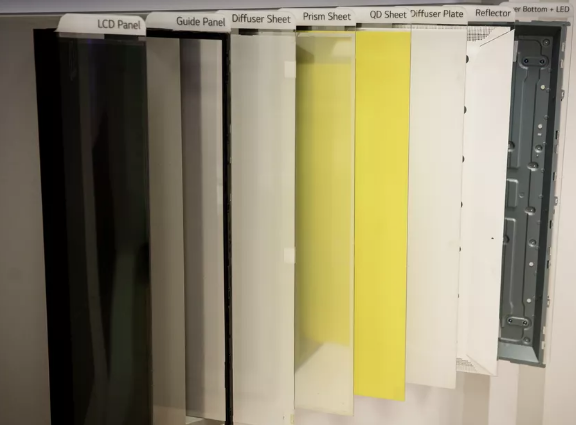QLED and OLED are two rising technologies that have both grown popular in recent years. To the average consumer, these are likely arcane acronyms whose names are meaningless. Today, I am here to offer some insight into what differentiates QLED from OLED.
QLED vs OLED- The Basics:
QLED is, put quite simply, just an OLED television which uses 'Quantum Dots'. These quantum dots are tiny nanoparticles, embedded in LCD panels, which significantly improve the brightness and color of an image on-screen. This technology is closer to traditional LCD than it is to OLED, which is a totally unique screen technology. It is worth noting that Samsung actually pioneered this technology in the consumer market. There are several key differences between the two technologies that are worth acknowledging before going further.
LED screens are almost like sandwiches in the way they are constructed; QLED is no different. QLED quantum dots, along with LEDs which act as 'shutters', ensure that a very specific amount of light escapes through the screen. These also work together to create the colors one sees leaving the television. QLED TVs rely upon opening and shutting LED 'shutters' in order to 'true blacks' as well, differing from the method employed by OLED TVs.
OLED TVs, wherein OLED stands for "Organic Light-Emitting Diode", differ greatly from LED and QLED TVs. Instead of utilizing 'shutter LEDs', every single pixel is also a minuscule LED. While normal LED and QLED TVs use varying layers to produce color and light, OLED televisions produce both in every single pixel. As they do not require the "LED Sandwich", OLED televisions are able to be substantially thinner than QLED TVs. By having pixels which emit their own light, they can be extremely thin compared to most TVs on the market.
[caption id="attachment_1628" align="aligncenter" width="576"]

An image showing the 'sandwich' of panels in an LCD TV screen. Source: https://www.cnet.com/news/qled-vs-oled-samsung-tv-and-lg-tv-2019-comparison/[/caption]
The Selling Points:
With the basics out of the way, it is necessary to discuss the reasons why one might purchase QLED over OLED or vice-versa. Perhaps most obvious is that QLED TVs come in a much wider range of sizes than the alternative. According to cnet.com, OLED TVs come in 55", 65", 77", and 88" models. Meanwhile, QLED TVs 43", 49", 55", 65", 75", 82", 85", 98"- a much wider range of sizes than OLED offerings. If one is searching for a specific size of television, QLED might be the superior option purely based upon their available sizes. This also ties into the fact that QLED TVs can often be acquired for substantially less than their LED peers.
For some examples of QLED prices: the
55" Samsung Q6FNA can be found for $1,150 and the
75" Samsung QA75Q60R can be acquired for $2,769. Meanwhile, the OLED 55" LG OLED55C9PUA goes for $1,599.99 and the 77" LG OLED77C9PUB goes for $5499.99. There is a notable price differential between OLED and QLED TVs, which has partially led to QLED's massive popularity among consumers.
Conclusion:
QLED and OLED Televisions have been on the market long enough now to have made a notable impact on the industry. That said, these terms are not terribly well explained on packaging or many online store pages. Hopefully this article has helped you to better understand these new technologies.
If you are interested in purchasing a region free/multi-system television, the experts at
220-Electronics.com will assist you with all of your needs.
220-Electronics focuses on providing affordable
region-free televisions and
Blu-ray/DVD players. They also offer 220-240 volt electronics of numerous types, allowing customers to purchase everything they need at a single site.
Sources:
cnet.com, Digital Trends  An image showing the 'sandwich' of panels in an LCD TV screen. Source: https://www.cnet.com/news/qled-vs-oled-samsung-tv-and-lg-tv-2019-comparison/[/caption]
An image showing the 'sandwich' of panels in an LCD TV screen. Source: https://www.cnet.com/news/qled-vs-oled-samsung-tv-and-lg-tv-2019-comparison/[/caption]



